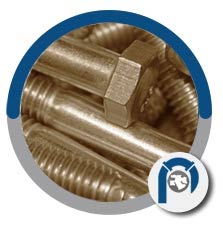Introduction:
Copper nickel alloys have gained significant recognition in the world of engineering and construction for their exceptional properties and versatile applications. Among the various components made from this alloy, copper nickel fasteners and pipes play a crucial role in various industries. In this article, we will delve into the characteristics, applications, and benefits of copper nickel fasteners and pipes, highlighting their durability and the advantages they offer in different settings.
Copper Nickel Fasteners:
Copper nickel fasteners are essential for joining different parts and components, providing strength, stability, and corrosion resistance. These fasteners are made from a combination of copper and nickel, along with trace elements such as iron and manganese. The unique composition imparts excellent mechanical and physical properties to the fasteners, making them suitable for a wide range of applications.
One of the key advantages of copper nickel fasteners is their exceptional resistance to corrosion, especially in marine environments. This makes them ideal for applications such as shipbuilding, offshore platforms, and desalination plants.
Copper nickel fasteners are also resistant to biofouling, ensuring a longer lifespan and reduced maintenance costs.
Furthermore, copper nickel fasteners offer excellent mechanical properties, including high tensile strength, good ductility, and superior resistance to fatigue. These properties make them suitable for critical applications where reliability and durability are paramount, such as in power generation facilities, chemical plants, and petrochemical industries.
Copper Nickel Pipes: Copper nickel pipes are widely used in various industries due to their excellent corrosion resistance, high thermal conductivity, and low permeability. These pipes are commonly employed in applications that involve the transportation of fluids, both in industrial and marine environments.
The corrosion resistance of copper nickel pipes is particularly noteworthy, making them highly suitable for seawater and brine applications. Their resistance to biofouling, erosion, and pitting ensures longevity and minimal maintenance requirements. As a result, copper nickel pipes are extensively used in offshore oil and gas platforms, desalination plants, and shipbuilding.
Another significant advantage of copper nickel pipes is their excellent thermal conductivity. This property enables efficient heat transfer, making them ideal for applications in heat exchangers, condensers, and HVAC systems. Additionally, the low permeability of copper nickel pipe ensures minimal fluid or gas leakage, enhancing system performance and safety.
Benefits of Copper Nickel Fasteners and Pipes:
Superior Corrosion Resistance: Copper nickel alloys exhibit remarkable resistance to corrosion in both marine and industrial environments, reducing maintenance costs and ensuring long-term performance.
Durability and Reliability: Copper nickel fasteners and pipes offer excellent mechanical properties, such as high tensile strength, good ductility, and resistance to fatigue, ensuring reliable performance even under demanding conditions.
Versatility:
These components find applications in various industries, including shipbuilding, offshore platforms, power generation, chemical plants, and HVAC systems, showcasing their versatility across different sectors.
Environmental Friendliness:
Copper nickel alloys are 100% recyclable, contributing to sustainable practices and reducing the carbon footprint.
Conclusion:
Copper nickel fasteners and pipes are indispensable components in numerous industries, providing exceptional corrosion resistance, durability, and versatility. Their ability to withstand harsh environments, coupled with excellent mechanical properties, makes them ideal for critical applications. As technology advances and industries continue to evolve, the demand for copper nickel fasteners and pipes is expected to grow, ensuring the continued success and relevance of this remarkable alloy.
Congrats! You’ve Finished This Blog.







